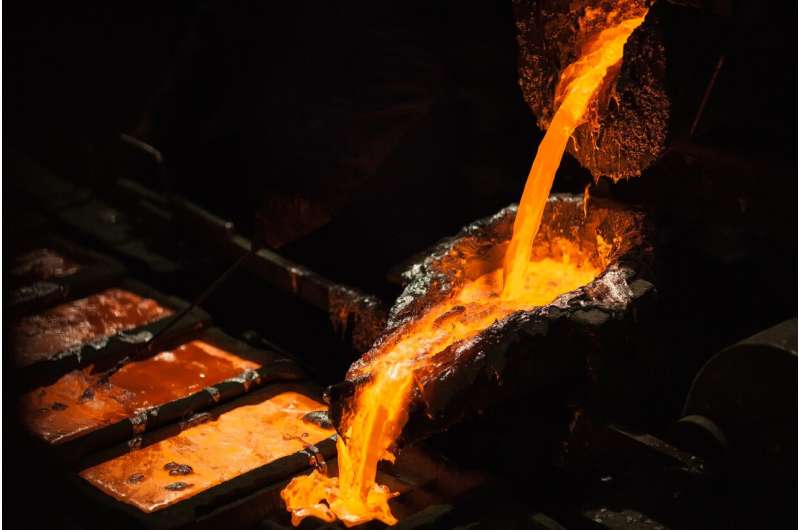
In research that is breaking new ground in alloy research and paves the way for improving the strength of alloys used in casting and welding, scientists from the University of Birmingham have described how tiny crystals grow and change shape in molten metals as they cool.
Their research used high-speed X-ray tomography to photograph the changing crystal structures in molten alloys as they cool.
The study shows that the solidification process starts with the formation of dendrites, which are formed by a layer-by-layer stacking of basic units. These units start out as L shaped and stack on top of each other like building blocks, but as they cool they change shape and transform into a U shape and finally a cube, while some of them stacked together to form beautiful dendrites.
The study was led by Dr. Biao Cai, from the University of Birmingham's School of Metallurgy and Materials.
The findings from this new study provide a real insight into what happens at a micro level when an alloy cools, and show the shape of the basic building blocks of crystals in molten alloys. The strength of the final alloy is determined by the shape of the crystal.
He said that the results were in contrast to the classical view of dendrite formation in cooling alloys, and that it opened the door to developing new approaches that could predict and control the formation of intermetallic crystals.
Dr. Cai's previous research resulted in a novel technology to improve the quality of recycled aluminum by removing iron from molten alloy in a simple, inexpensive process that uses magnets and a temperature gradient.
The technology is the subject of a patent application. Biao has been able to build a large-scale prototype that runs to 1000 C thanks to funding from the Midlands Innovation Commercialization of Research and the EPSRC-Impact Acceleration Account.
The prototype is being tested using ingots provided by the Tandom Metallurgical Group, which operates an international trading operation from its base in Congleton, Cheshire.
Dr. Cai expects to publish the results of the testing and showcase the demonstrator to industry before the end of the year, with the aim of finding industrial collaborators willing to run tests in foundry settings in combination with existing production lines.
More information: Zihan Song et al, Revealing growth mechanisms of faceted Al2Cu intermetallic compounds via high-speed Synchrotron X-ray tomography, Acta Materialia (2022). DOI: 10.1016/j.actamat.2022.117903 Journal information: Acta Materialia Citation: Research paves the way for stronger alloys (2022, June 1) retrieved 1 June 2022 from https://phys.org/news/2022-06-paves-stronger-alloys.html This document is subject to copyright. Apart from any fair dealing for the purpose of private study or research, no part may be reproduced without the written permission. The content is provided for information purposes only.